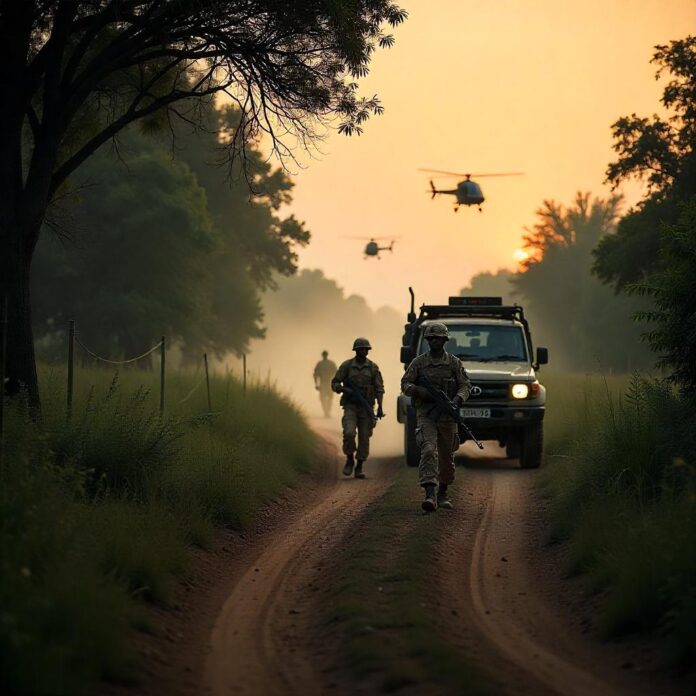On the night of June 9, 2025, in the thorny bushland near Mallamfatori in Borno State, Nigerian troops under Operation Hadin Kai executed a high‑stakes raid that ended with the neutralisation of Malam Jidda, a notorious Boko Haram/ISWAP commander. This single operation didn’t just remove another insurgent fighter — it dismantled a strategic figurehead deeply entrenched in the terrorist group’s local operations.
For thousands of families displaced by Boko Haram’s violence since 2009, this news rings with hope. For soldiers who have risked ambushes and landmines in Nigeria’s northeast, it’s a morale boost. For security watchers, it’s a revealing glimpse into how Nigeria is evolving its fight against extremist insurgency — moving from blunt‑force tactics to precision intelligence and rapid force deployment.
In this comprehensive account, I’ll walk you through how the raid unfolded, who Malam Jidda really was, the aftermath on the battlefield, and why this operation signals a new phase in Nigeria’s war against terror. Let’s break this down, one truth at a time.
Who Was Malam Jidda?
Malam Jidda, by multiple security reports, was a key commander within ISWAP’s Borno cell. Locals in Ngorgore and Malumti villages knew him as the “Ameer” — a leader who enforced ISWAP’s harsh codes, coordinated raids, and maintained hidden supply lines for fighters moving between Nigeria’s Lake Chad basin and the Sambisa forest axis.
For years, he orchestrated attacks on both civilians and security outposts. He was feared for ruthless reprisal raids: villagers suspected of spying or helping the military often disappeared overnight. Intelligence sources believe he was instrumental in cross‑border smuggling routes, helping ferry arms and new recruits between Nigeria, Niger, and Chad.
In simple terms, Malam Jidda wasn’t just another gunman. He was an operational nerve center — the kind of figure who could rally splinter cells after bigger leaders fell. His death, therefore, isn’t just symbolic; it disrupts ISWAP’s chain of command in a region they have used for safe haven for years.
The Battlefield: Where It Happened
The operation took place in the rugged area near Mallamfatori, within Abadam Local Government Area of northern Borno. This is classic insurgent terrain — dense thickets, footpaths used by farmers by day and militants by night, swamplands and fish ponds that double as hiding places for arms.
Mallamfatori sits near the fringes of Lake Chad, close to the porous borders with Niger and Chad. This cross‑border openness has long been Boko Haram and ISWAP’s lifeline: fighters slip in and out, avoiding large troop deployments. It’s also where Nigerian forces have historically faced ambushes and IED traps laid on narrow dirt tracks.
On this fateful night, however, the military flipped the script — taking the fight directly into what militants wrongly assumed was safe ground.
The Operation: How Troops Cornered Malam Jidda
This wasn’t an overnight miracle. According to multiple field sources, the raid that took down Malam Jidda was a product of patient intelligence gathering, surveillance, and tight‑lipped planning. Over several weeks, local informants and military intelligence tracked Jidda’s movements, studying his routine, his hideouts, and the routes his escorts used.
On June 9th, under cover of darkness, a joint force from the Nigerian Army and the Air Force advanced on his location. While exact troop numbers remain classified, witnesses confirm it involved multiple platoons with air reconnaissance providing real‑time visuals.
Once troops closed in, they engaged in a fierce firefight. Reports indicate Jidda and his fighters attempted to break out but were overwhelmed by superior firepower. Heavy gunfire rattled the bushland for hours until the insurgent camp was secured. By dawn, Malam Jidda lay dead.
What Troops Recovered on the Ground
The scale of recovery from this single raid underlines why this was more than a manhunt. After the gunbattle, troops conducted a meticulous sweep of the area. Here’s what they found:
AK-47 rifles
Multiple units, still loaded and arranged for quick access.
RPG tubes and launchers
Signifying that the cell was prepared for anti‑armor or fortified attacks.
Motorcycles
Boko Haram and ISWAP use these for lightning raids on villages and military convoys.
Communication radios
Essential for coordinating movements with distant cells.
Ammunition belts, grenades, and small arms
Indicating a well‑supplied mini base.
The Human Cost
In every counterinsurgency operation, the cost isn’t measured solely in weapons seized but in lives lost and communities disrupted. In this operation, reports from the front confirm that Malam Jidda and an undisclosed number of his foot soldiers were neutralised. Bodies were found scattered around the campsite and nearby bushes — a sign that some attempted escape under fire.
No casualties were reported on the military side, according to official briefings. However, in operations like this, the psychological toll on troops and surrounding villagers is real. Fleeing militants may retaliate against local informants or target softer civilian communities to reassert fear. This underscores why follow‑up security and community support are critical after every successful raid.


